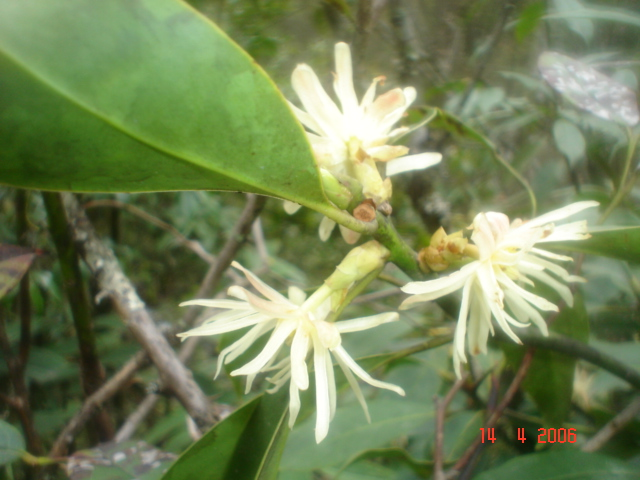Introduction
Illicium griffthii Hook. F. &
Thomson. (Bhutan Flora, 1984). Dorji, (1995) has referred to this specie as Illicium anisatum synonym for Illicium verum according to the encyclopedia
of species) of Aja which has often been misunderstood for star anise (Illicium verum) is one species of plant
that can be found in abundance right from a place called Shingdohgor on the way
to Aja from Yarab in Bumdeling Wildlife Sanctuary's Serzhong Park Range.
Resembling
the Magnoliaceae family of plants, this species is confined to the Aja valley and
the adjoining Yangla hills in Serzhong Park Range about three hour walk above
Yarab village.
Locally
known as Sengpasey this not-so-large growing tree (Figures 1 and 2) is evergreen in nature and is known to give farmers of the locality
cash income in the past.
Figure 1. A flowering Pentsadi from Aja (Photo: Author)
Figure 2. Illicium griffithii in its natural habitat at Aja Nimathang. It was
grown after the first tree was cut at the base and bore lots of flowers.
Morphometry
The biggest
plant of this species measured in Aja was 4'9"
gbh growing to a height of about 24 meters (tip of the crown) (Wangyal, J. T.,
Wangdi, K. and Mukhia, P. B. in April 2005).
Elevation
The plant has
been found from 1333 m MSL (Shingdohgor) and 1550 (Yangla) to about 3000m MSL
(Kuenzangling) in Serzhong Park Range. This plant branches profusely in the
openings and is not so straight in the shades. Bears more flowers and fruits
as short plant and is a good coppice-r. Experience in Aja found that the tree
gives more fruits in the open than the ones in the forest with other species.
Figure 3. This is the picture of a full-grown tree at
the base of Aja Pema Yangdzong people take care of these trees more than other species since they fetch them some cash.
These trees are
found in maximum density on the southern aspects growing well in the sandy loam
soil substrate in gentle to slightly steep slopes (Aja experience). They are
glabrous and evergreen in nature.
The Root
The root system of this plant is tap and they don't branch much.
The bud
The flower bud
grows at the axils of the leaf base with the sepals covering the whole system
of the flower at the bud stage. The picture below shows the buds at the leaf
bases as they are found growing in nature.
Figure 4. Picture showing the flower buds growing at
the base of the node from where leaves grow. The buds of Pentsadi trees appear normal like that of any species but are unusually thick
The leaf
The leaves of
the specie with reticulate venation look glabrous. The leaf phyllotaxy is
alternate. The length of the petiole is about 3 - 4cm. Describe leaf apex,
base, venation, phyllotaxy, stink, etc. The dorsal part and the ventral part etc. about the leaf.
Figure 5a. The ventral part of the leaf
Figure 5b. The dorsal part of the leaf
The stem, bark, and the branches
Figure 6. Image of stem, bark, and branches
The flower
Figure 7a. Flower
Figure 7b. Flower
Figure 7c. Flower
The fruitFigure 8a. Fruiting flower
Figure 8b. Fruit
Figure 8c. Fruiting in action
The seedsFigure 9. The seeds
The habitats
Figure 10a. The habitat of Sengpasey
Figure 10b. Aja valley where the mind may not want to move, once you are there.
Noto bene
This piece of writing on Pentsadi has been put in my blog to recall what I used to practically do as Range Officer of Serzhong Range under Bumdeling Wildlife Sanctuary between 2004 and 2007. I have just copied my report of the 2006 trip and has been put here unaltered. Well, I remember I enjoyed a lot walking to Aja whenever I liked to even when I had no official orders to travel. I hope Numo Tadhongma at Phunyingla is looking after me for my successful life.



















No comments:
Post a Comment